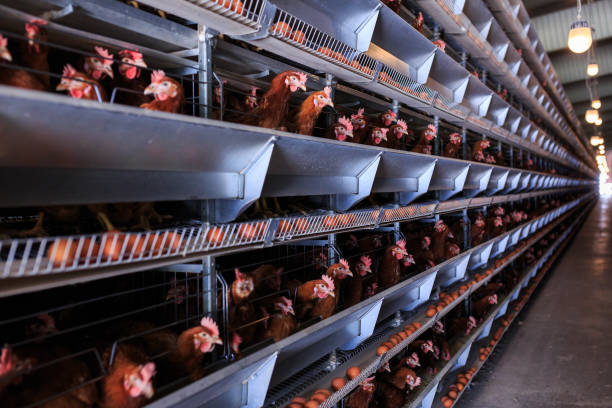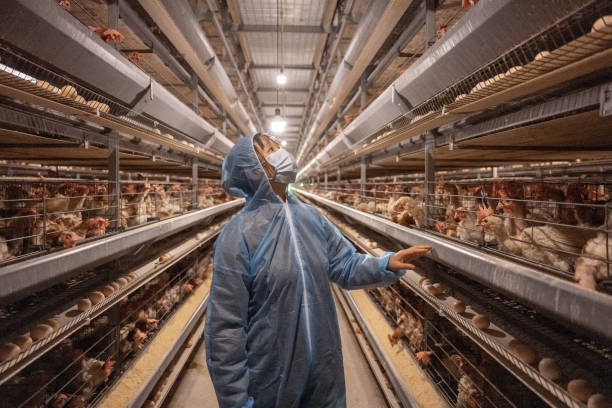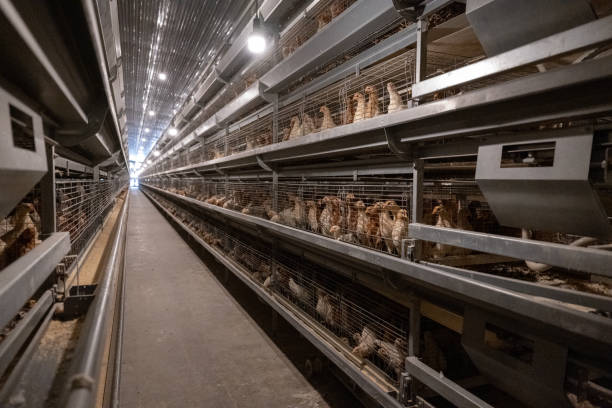
Custom Poultry Cage Systems for 60,000 Birds
Custom Poultry Cage Systems for 60,000 Birds
Managing a poultry operation with 60,000 birds isn’t just about space and quantity—it’s about efficiency, sustainability, and smart design. As farms grow in scale, off-the-shelf cage systems simply don’t cut it anymore. That’s where custom poultry cage systems come into play. At Zhengzhou Livi Machinery Manufacturing Co., Ltd., we specialize in designing tailor-made solutions tailored to your flock size, housing conditions, production goals, and local regulations. Whether you’re setting up a new layer farm, expanding an existing one, or transitioning from floor rearing to caged systems, a 60,000-bird setup requires careful planning—and we can help you get it right.
What You Need to Know Before Designing a 60,000-Bird System
Before jumping into steel structures and conveyor belts, let’s break down what really matters when building a large-scale chicken farming solution. A system for 60,000 birds is no small project. It will likely span several houses—each possibly holding 15,000 to 20,000 birds—depending on ventilation, biosecurity, and operational management strategies. The first step? Understanding your bird type. Are you running a laying hen farm, a broiler operation, or raising pullets? Each has different space needs, feeding patterns, and health requirements.
Laying hens, for example, need adequate nesting space and perching areas. Broilers grow fast and get heavy, so floor strength, air quality, and waste management are critical. With 60,000 birds, even minor inefficiencies snowball quickly. Poor airflow in one house can lead to high mortality rates; poorly spaced feed lines mean uneven growth and wasted feed. This is why “one-size-fits-all” doesn’t work here. Our engineers at Livi conduct site assessments and work closely with clients to map out the exact dimensions, bird density, layout flow, and automation needs before a single beam is cut.
Our custom approach includes determining the number of tiers (3-tier vs. 4-tier), aisle width, cage mesh gauge, slope angle for egg collection, manure belt placement, and automatic feeding and watering integration. We also factor in climate control—be it natural ventilation for mild regions or tunnel ventilation with cooling pads in hotter zones. Every detail is optimized to reduce labor costs, improve bird welfare, and maximize egg or meat output over time.

Smart Features That Make Large-Scale Farming Easier

When dealing with tens of thousands of birds, automation isn’t a luxury—it’s essential. Manual feeding, egg gathering, or manure removal on this scale would require hundreds of workers and still be prone to errors. That’s why our custom poultry cage systems for 60,000 birds come embedded with smart, modular automation features that integrate seamlessly across all houses.
Take the automatic feeding system: instead of relying on scattered trays or daily manual refills, we install centralized silos connected to chain or pan feed lines that distribute feed precisely and evenly across every tier. These systems can be timed remotely via mobile app or controlled through a central dashboard. Similarly, automated watering uses pressure-regulated nipple lines that deliver fresh water on demand while minimizing spillage—critical for maintaining dry litter and reducing disease risks.
For egg-laying operations, the highlight is the egg collection conveyor belt system. Eggs roll gently from the cage front onto rubber-lined belts that move them directly to a central packing area. No more dirty or cracked eggs from floor collection. You save time, improve hygiene, and boost marketable yield. And because these systems are modular, they can be expanded later if you decide to increase capacity.
Manure management is another game-changer. Our multi-level designs include either scraper systems or built-in conveyor belts that remove droppings daily without disturbing the birds. Dry, separated waste can then be composted or sold as organic fertilizer—a bonus income stream many of our clients love. Plus, removing manure regularly keeps ammonia levels low, which means healthier birds and better feed conversion rates.
We’ve even integrated optional monitoring tech: temperature sensors, humidity trackers, CCTV bird behavior cams, and alarm systems that notify you instantly if something goes wrong—even when you’re off-site. Imagine getting a push notification at midnight telling you House 3 has low water pressure. That kind of peace of mind is priceless when managing a massive flock.
Real-World Benefits: Why Custom Beats Standard
You might wonder—can’t I just buy standard cages and piece them together myself? Technically, yes. But doing so often leads to mismatched parts, inefficient layouts, increased maintenance, and higher long-term costs. Think of it like building a house: you could use prefab walls from different suppliers, but unless they’re designed to fit together perfectly, you’ll end up with structural gaps, poor insulation, or leaks.
The same logic applies to poultry housing. Custom systems ensure everything aligns—cages match aisle widths, feed lines sync with cage fronts, and electrical conduits route safely behind walls. More importantly, a fully customized solution saves money in the long run. How?
First, optimized space usage means fewer construction materials and lower building costs. Second, streamlined workflow reduces labor by up to 60% compared to traditional setups. One farmer in Nigeria switched to our 60,000-bird custom layout and went from needing 45 full-time workers to just 18—with higher egg production and lower mortality. Third, energy-efficient components (like low-voltage motors and LED lighting) lower utility bills month after month.
Beyond cost savings, custom systems are also easier to maintain and upgrade. If a part wears out, replacements are readily available because we keep your design on file. If regulations change or you want to add RFID tagging or AI-based health tracking in the future, our systems are built to accommodate those upgrades without tearing everything apart.
We’ve helped clients in Kenya, Vietnam, Ukraine, and Mexico set up similar large-scale farms, adapting each design to local climate, power availability, and labor models. One key takeaway? Success isn’t just about buying equipment—it’s about having a partner who understands your unique challenges and helps you solve them step by step.
Let Us Help You Build Smarter—for Now and the Future
Whether you’re starting from scratch or scaling up, designing a poultry cage system for 60,000 birds shouldn’t feel overwhelming. With the right expertise and proven technology, you can build a modern, profitable, and sustainable operation that stands the test of time. At Livi Machinery, we don’t just sell cages—we deliver complete farming solutions backed by over 12 years of experience and thousands of satisfied customers worldwide.
From initial consultation to factory installation and staff training, we walk with you every step of the way. Our team speaks English, Spanish, Russian, Arabic, and more, ensuring clear communication no matter where you are. All our products are made from galvanized steel, rust-resistant coating, and rigorously tested before shipping. We offer CIF, FOB, and door-to-door delivery options, plus flexible payment terms to suit your budget.
If you’re serious about maximizing productivity and minimizing headaches on your 60,000-bird farm, now is the time to go custom. Drop us a message today with your farm details—number of houses, location, bird type, and production goals—and we’ll send you a free preliminary layout and quote within 48 hours. Don’t build blind. Build smart with Livi.

Frequently Asked Questions
Can your system support both egg and meat production?
Yes, absolutely. We design separate configurations for layer farms (using laying hen cages with nesting zones) and broiler farms (with wider, sturdier cages for heavier birds). Some customers even run dual-purpose facilities using modular sections we can customize accordingly.
How long does it take to manufacture and deliver a 60,000-bird system?
Typically, production takes 35 to 45 days after order confirmation. Shipping depends on your location but usually adds 20–40 days by sea freight. We provide regular updates throughout the process.
Do you offer installation support overseas?
Yes. We can dispatch trained technicians to your site for supervision, installation guidance, and worker training. Travel costs and accommodations are covered by the client, but we make the entire process smooth and safe.
Are spare parts included?
We include a standard kit of spare parts (extra nipples, connectors, belt joints, etc.) with every full-system order. Additional spares can be ordered separately, and we keep your blueprint on file for future replacements.
Can the system be powered by solar energy?
Yes! Many of our clients in remote areas use hybrid power setups. Our electric components are designed to run on low voltage and can easily integrate with solar inverters and battery banks.
Is there a warranty?
All our equipment comes with a 2-year structural warranty and 1-year warranty on motors and electronic components. Proper maintenance extends lifespan to over 15 years.
How do I clean and sanitize such a large system?
Our cages are designed for easy cleaning—smooth surfaces, minimal corners, and removable trays where applicable. Most farms use high-pressure sprayers during downtime between flocks. Automated flushing systems for water lines are also available.
Will the cages withstand harsh weather?
Absolutely. All materials are hot-dip galvanized before welding, making them corrosion-resistant even in humid, salty, or rainy environments.
Can I view a video of a completed 60,000-bird project?
Yes, we have case study videos and virtual tours of real installations. Just ask us to share the link via WhatsApp or email.
How much labor will I need with this system?
Most of our 60,000-bird customers operate with 10–20 skilled workers, depending on automation level. Fully automated systems minimize daily hands-on tasks significantly.
